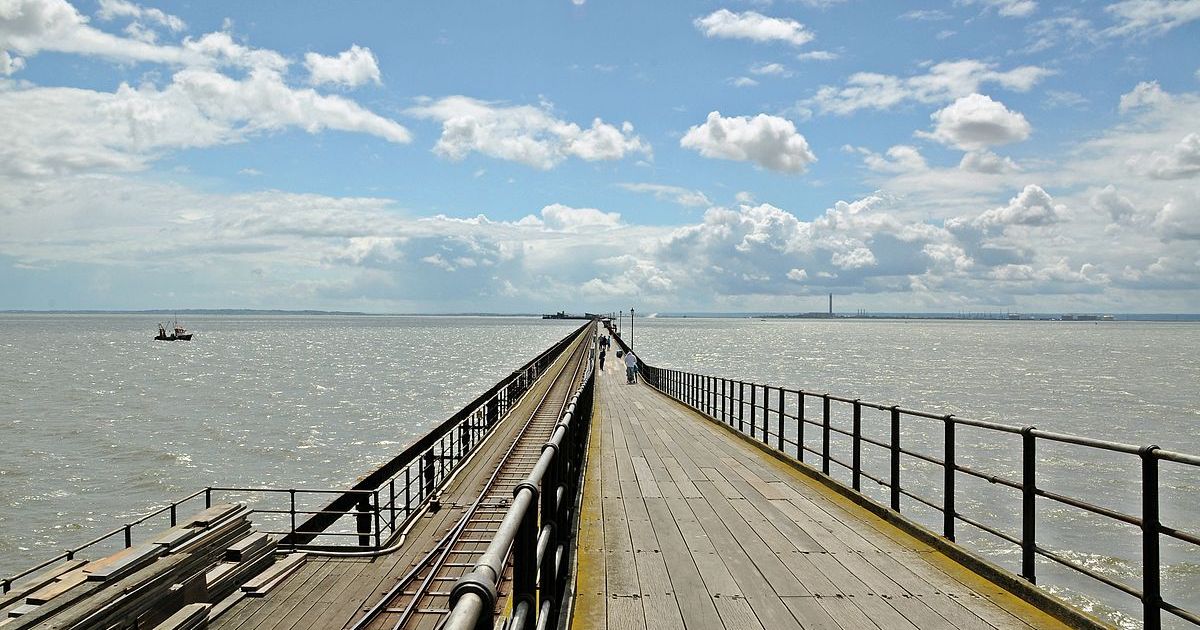Southend Pier is a major landmark in Southend-on-Sea. Extending 1.33 miles (2.14 km) into the Thames Estuary, it is the longest pleasure pier in the world. The bill to build the new pier, to replace a previous timber jetty, received Royal Assent in May 1829 with construction starting in July 1829. The timber pier was replaced by an iron pier that opened to the public in August 1889. The Southend Pier Railway, opened in the early 1890s, was the first pier railway in the country.

The pier played a role through both of the world wars, such as during World War I when ships housing German prisoners of war were moored off the pier head. In the Second World War, the pier was taken over by the Royal Navy and was renamed HMS Leigh, closing to the public in September 1939. The pier has experienced several fires, notably in 1959, 1976, 1995 and 2005, with the latter causing significant damage to the old pier head and surrounding structures.

Seaside towns became popular with tourists in the second half of the 18th century. By the early 19th century, Southend was growing as a holiday resort. At the time, it was thought that spending time by the sea was good for one's health and since it was close to the capital, many Londoners would come to Southend for this reason. Travellers would often arrive by boat, which presented problems as boats could only dock during high tide.

The Southend coast consists of mudflats that extend far from the shore, with a high tide depth that seldom exceeds 18 feet (5.5 m). Large boats were unable to port near to the beach and no boats could approach at low tide. Many potential visitors would travel beyond Southend on to Margate or other resorts with better docking facilities.

According to en.wikipedia





![[TOP – BEST PRODUCTS 2023] TOP 100 outstanding OCOP- certified products in Vietnam (P.02) Antesco Henicorhynchus poached with sugarcane (An Giang Province)](https://aseanrecords.world/wp-content/uploads/2023/05/Ca-Linh-kho-mia-218x150.jpg)
![[TOP – BEST PRODUCTS 2023] TOP 100 outstanding OCOP- certified products in Vietnam (P.01) Mr.Ba Loc “Chao” fermented Java barb (An Giang Province)](https://aseanrecords.world/wp-content/uploads/2023/05/ipiccy_image-7-1024x640-1-218x150.jpg)






